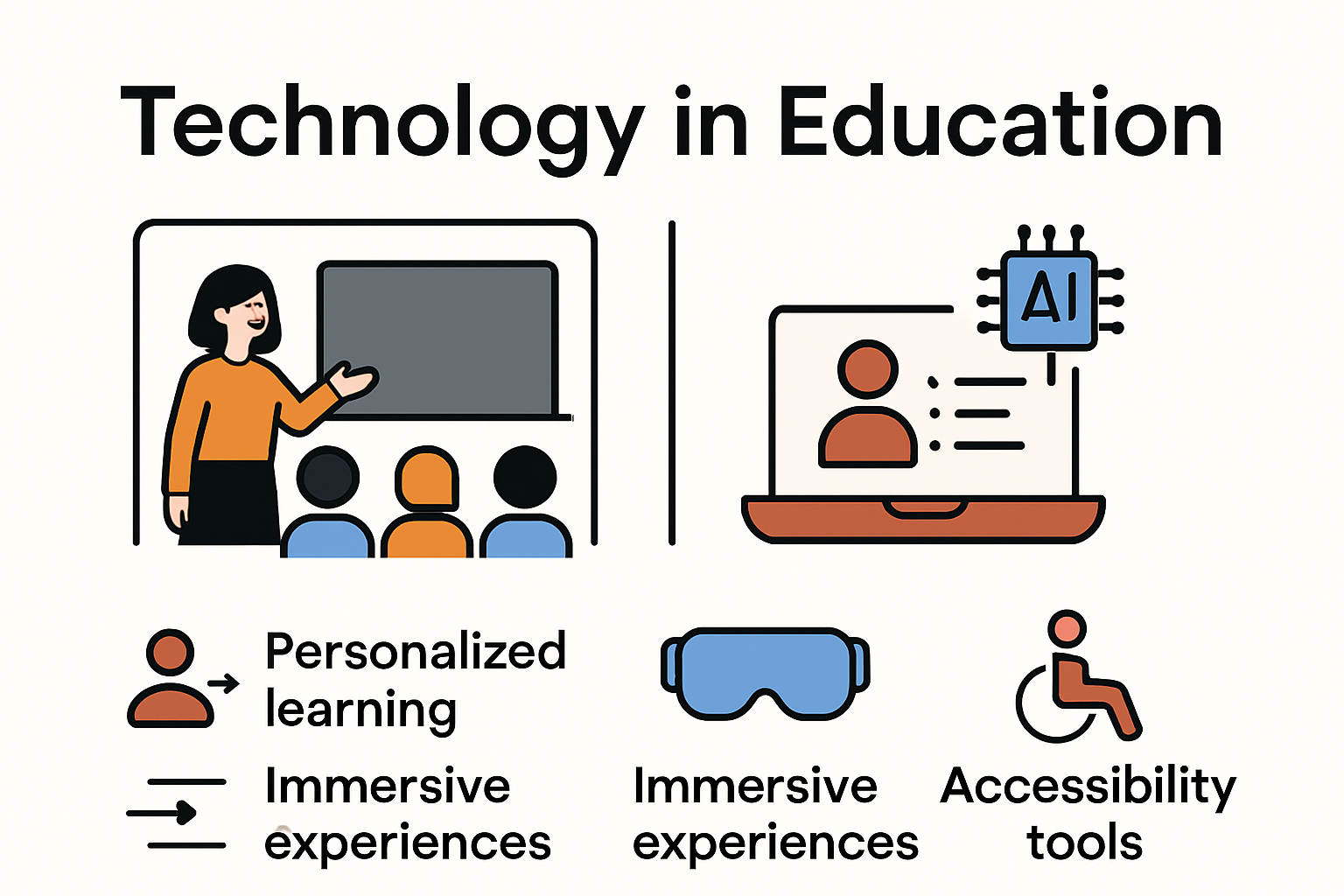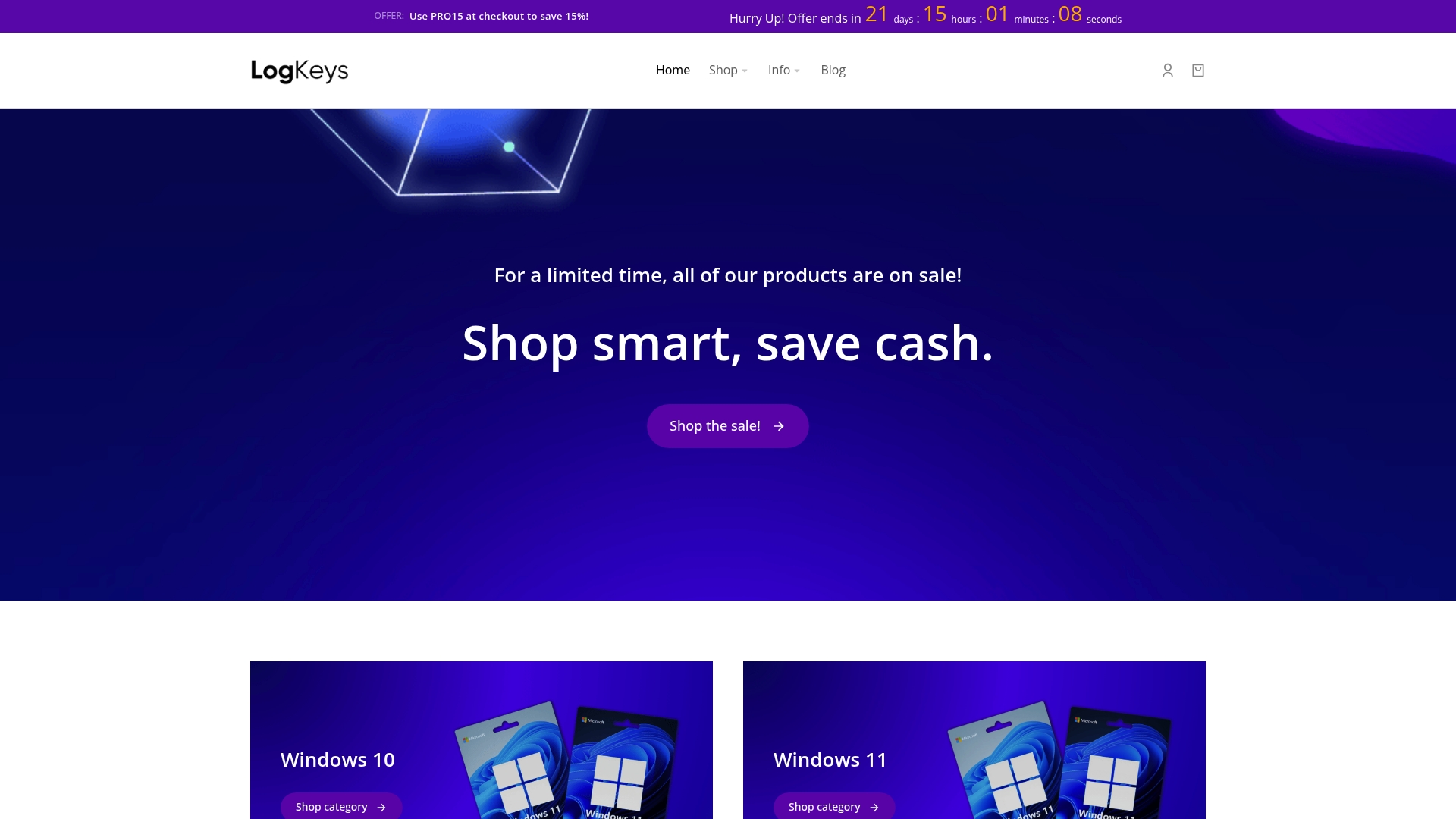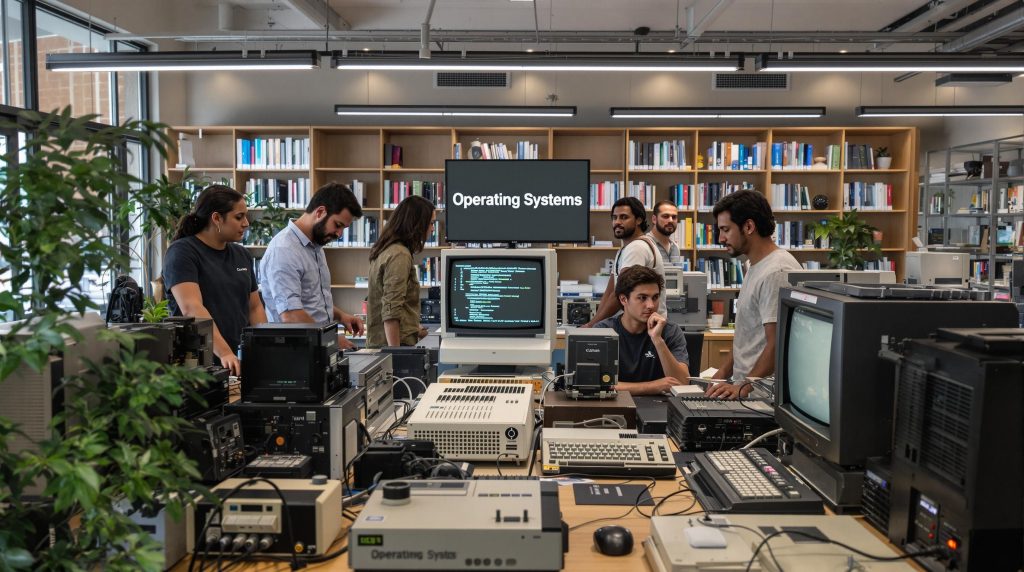Technology in Daily Life touches nearly every moment of our daily lives now, from how we wake up in the morning to the way we learn, work, and connect with loved ones. Most people think gadgets just make things more convenient, like setting reminders or switching off the lights with a quick voice command. But the real surprise? Over 947 million smart home devices are expected to be used worldwide by 2025, and that’s not just about convenience. This massive number signals a deep shift in the way we experience work, family, learning, and even health, opening doors we never imagined before.
Table of Contents
ToggleQuick Summary
| Takeaway | Explanation |
|---|---|
| Remote work is here to stay. | 82% of company leaders plan to allow work-from-home options for employees, enabling flexible work environments. |
| AI is reshaping job roles. | Automation of 30% of work tasks will change productivity expectations, requiring employees to adapt their skills. |
| Smart homes make life easier. | Nearly one billion smart devices will enhance home management, offering greater control and efficiency. |
| Digital communication strengthens family ties. | Technology enables families to connect across distances through video calls and instant messaging. |
| Personalized learning is essential. | AI-driven adaptive learning systems create tailored education experiences to meet individual needs and enhance engagement. |
How Technology in Daily Life Changes How We Work
Technology has fundamentally reshaped the modern workplace, transforming how professionals collaborate, communicate, and complete tasks. The digital revolution has accelerated productivity while simultaneously creating new challenges and opportunities across industries.
Remote Work Revolution
The rise of digital tools has dramatically redefined traditional workplace boundaries. Gartner Research revealed that 82% of company leaders plan to permit employees to work remotely part-time after the pandemic. Cloud-based platforms, video conferencing technologies, and collaborative software have made geographic location increasingly irrelevant.
Professionals now leverage sophisticated tools that enable seamless communication across continents. Project management platforms like Slack, Zoom, and Microsoft Teams have become essential infrastructure for global teams. These technologies allow instant messaging, video conferences, screen sharing, and real-time document collaboration, effectively breaking down traditional organizational silos.
Artificial Intelligence and Automation
Artificial intelligence is revolutionizing workplace efficiency by automating repetitive tasks and providing advanced analytical insights. McKinsey Global Institute estimates that approximately 30% of work activities could be automated by 2030, fundamentally restructuring job roles and productivity expectations.
Machine learning algorithms now handle complex data processing, predictive analytics, and decision-support functions across sectors like finance, healthcare, and manufacturing. Employees are increasingly transitioning from manual task execution to strategic oversight and creative problem-solving, with technology handling routine computational work.
Continuous Learning and Skill Adaptation
Technology demands continuous professional development. Workers must perpetually update their digital skills to remain competitive. Online learning platforms, webinars, and micro-credentialing systems have democratized professional education, allowing individuals to rapidly acquire new technological competencies.
The modern workplace requires technological fluency across generations. Young professionals entering the workforce must simultaneously understand emerging technologies while older workers adapt to rapidly changing digital ecosystems. This dynamic creates unique intergenerational learning opportunities and challenges traditional hierarchical knowledge transfer models.
Technology is not just changing how we work it is fundamentally reimagining the concept of work itself. By eliminating geographical constraints, automating routine tasks, and creating new collaborative possibilities, digital tools are constructing a more flexible, efficient, and interconnected professional world.
Impact of Technology on Home and Family Life
Technology has profoundly transformed home and family dynamics, reshaping how families communicate, entertain, and manage daily responsibilities. Digital innovations have created both opportunities and challenges for modern households, fundamentally altering traditional family interactions.
Smart Home Integration
Statista Research reports that global smart home device ownership is projected to reach 947 million units by 2025, indicating a massive shift in household technology adoption. Smart home devices now enable families to control lighting, temperature, security, and entertainment systems through integrated digital platforms.
Voice-activated assistants like Amazon Alexa and Google Home have become central communication hubs, allowing family members to manage schedules, play music, control home appliances, and access information instantaneously. These technologies streamline household management, reducing manual tasks and creating more efficient living environments.
To help you compare the types and main benefits of smart home devices discussed above, see the table below:
| Device Type | Main Function | Key Benefit |
|---|---|---|
| Voice-activated assistants | Manage schedules, play music, control appliances | Centralizes home control |
| Smart lighting | Adjust home lighting via voice or app | Energy efficiency, convenience |
| Smart thermostats | Regulate temperature remotely | Comfort, cost savings |
| Security systems | Monitor/home security & safety | Enhanced safety, peace of mind |
| Entertainment systems | Manage media/devices in home | Simplified entertainment |
Digital Communication and Family Connections
Digital platforms have revolutionized family communication, particularly for geographically dispersed families. Pew Research Center found that 81% of Americans use smartphones to stay connected with family members, enabling real-time video calls, instant messaging, and shared digital experiences across different locations.
Social media platforms and messaging applications have created new modes of familial interaction. Grandparents can now watch grandchildren grow through video calls, siblings separated by distance can share daily experiences instantly, and extended family networks can maintain closer connections through digital platforms.
Technology and Family Dynamics
While technology offers unprecedented connectivity, it simultaneously presents challenges to family interactions. Screen time management has become a critical parental concern. Common Sense Media indicates that teenagers spend an average of nine hours daily consuming digital media, raising questions about healthy technology engagement.
Families are developing new strategies to balance digital interactions with meaningful personal connections. Many households now implement technology-free zones or designated family times to encourage direct personal communication and reduce digital dependency.
Technology has fundamentally reimagined family life, creating a complex ecosystem of digital interactions that simultaneously connect and challenge traditional family structures. As digital innovations continue evolving, families must consciously navigate these transformative technologies to maintain meaningful human connections.
Technology in Education and Learning
 Technology has fundamentally transformed educational experiences, creating dynamic learning environments that transcend traditional classroom boundaries. The integration of digital tools and innovative platforms is revolutionizing how students acquire knowledge, interact with educational content, and develop critical skills for the future.
Technology has fundamentally transformed educational experiences, creating dynamic learning environments that transcend traditional classroom boundaries. The integration of digital tools and innovative platforms is revolutionizing how students acquire knowledge, interact with educational content, and develop critical skills for the future.
Personalized Learning Experiences
OECD Research highlights the emerging potential of artificial intelligence to provide highly personalized learning experiences. Adaptive learning platforms now use sophisticated algorithms to analyze individual student performance, tailoring educational content to specific learning styles, strengths, and areas requiring improvement.
These intelligent systems can identify knowledge gaps, recommend targeted resources, and adjust difficulty levels in real-time. Students receive customized learning pathways that maximize engagement and comprehension, moving beyond the traditional one-size-fits-all educational approach. Check out our guide on advanced learning technologies for more insights into how digital tools are transforming education.
Immersive Learning Technologies
Research published in Smart Learning Environments demonstrates the transformative potential of immersive technologies like Augmented Reality (AR), Virtual Reality (VR), and Extended Reality (XR). These technologies create interactive, three-dimensional learning environments that enable students to explore complex concepts through experiential learning.
Science students can now conduct virtual laboratory experiments, history learners can take immersive tours of historical sites, and medical students can practice surgical techniques in risk-free digital simulations. These technologies break down traditional learning barriers, providing hands-on experiences that were previously impossible or prohibitively expensive.
Inclusive and Accessible Education
Innovative research on AI-powered accessibility reveals how technology is making education more inclusive. Platforms like Audemy demonstrate how adaptive technologies can support students with diverse learning needs, particularly those with visual impairments. These systems use advanced algorithms to create personalized, audio-based learning experiences that adapt to individual learning patterns.
Digital tools are democratizing education, providing unprecedented access to learning resources for students worldwide. Online platforms, massive open online courses (MOOCs), and digital learning management systems eliminate geographical and economic barriers, allowing individuals to access high-quality educational content regardless of their location or economic background.
Technology in education represents more than just a technological upgrade it signifies a profound pedagogical revolution. By personalizing learning experiences, creating immersive educational environments, and promoting inclusivity, digital innovations are reshaping how knowledge is acquired, understood, and applied in the 21st century.
Everyday Health and Wellness Tech Benefits
Technology has emerged as a powerful ally in personal health management, transforming how individuals monitor, understand, and improve their physical and mental well-being. Digital innovations are providing unprecedented insights and tools that empower people to take proactive approaches to their health.
Advanced Health Monitoring
National Institutes of Health Research reveals that smartphones and wearable devices have become critical tools in personal health tracking. These technologies continuously monitor vital health metrics including heart rate, sleep patterns, physical activity, and stress levels, providing real-time data that enables more informed health decisions.
Modern fitness trackers and smartwatches go beyond simple step counting. They now offer comprehensive health dashboards that integrate multiple physiological indicators, allowing users to develop a holistic understanding of their wellness. Some advanced devices can even detect potential heart irregularities, provide early warning signs of health issues, and recommend personalized lifestyle interventions.
The following table summarizes key features and benefits of popular health and wellness technologies mentioned above:
| Technology | Main Features | Health Benefit |
|---|---|---|
| Fitness trackers | Track steps, activity, heart rate, sleep | Personal health insights |
| Smartwatches | Comprehensive health dashboard, alerts | Early detection & holistic monitoring |
| Health apps | Nutrition tracking, mental health support | Improved wellness & behavior change |
| Telemedicine platforms | Video consults, remote monitoring | Greater accessibility, convenience |
Telemedicine and Digital Healthcare
NCBI Economic Research highlights the transformative potential of digital health technologies in healthcare accessibility and cost management. Telemedicine platforms have dramatically expanded healthcare reach, enabling patients to consult medical professionals remotely, access specialist consultations, and receive continuous health monitoring without traditional geographical constraints.
These digital healthcare solutions are particularly beneficial for individuals in rural areas, those with mobility challenges, or people with demanding work schedules. Patients can now receive medical consultations, get prescriptions, and track treatment progress through smartphone applications, reducing healthcare system burdens and improving overall patient experience.
Wellness and Behavioral Management
Mobile Health Technology Research demonstrates how smartphone applications are revolutionizing personal wellness management. These digital tools provide interactive platforms for tracking nutrition, managing mental health, monitoring exercise routines, and supporting behavior change through personalized feedback and motivation.
Wellness apps now incorporate advanced features like AI-driven nutritional analysis, mental health tracking, meditation guidance, and personalized fitness recommendations. By gamifying health goals and providing real-time progress tracking, these technologies make wellness engagement more interactive and enjoyable.
Technology in health and wellness represents more than just digital convenience it signifies a fundamental shift towards proactive, personalized, and accessible healthcare. As digital innovations continue evolving, individuals gain increasingly sophisticated tools to understand, manage, and optimize their physical and mental well-being.
Frequently Asked Questions
What are the main benefits of technology in the workplace?
Technology enhances productivity, supports remote work, and automates repetitive tasks. It allows for seamless communication and collaboration across teams, making work more efficient and flexible.
How is technology impacting family life?
Technology facilitates better communication among family members, especially those who are geographically distant. It allows for instant messaging, video calls, and smart home integrations that streamline household management.
What role does technology play in education?
Technology provides personalized learning experiences through adaptive learning platforms, enhances engagement with immersive learning technologies, and promotes inclusivity in education by making resources accessible to diverse learners.
How does health tech improve personal wellness?
Health technology, such as wearable devices and telemedicine, offers advanced health monitoring, remote consultations, and personalized wellness support. These tools enable individuals to track their health metrics and make informed decisions.
Power Your Digital Life With Genuine Software Solutions
You have seen how smart devices, virtual collaboration, and personalized learning experiences are changing daily routines. But many people struggle to unlock the full benefits of streamlined technology because their computers run on outdated or unlicensed Windows and Office software. Issues like annoying activation messages, security risks, or missing essential updates can hold you back from enjoying the connected, efficient future described in this article.

Logkeys.com offers an easy way to stay secure, productive, and ready for whatever technology brings in 2025. Instantly access genuine Windows 10, Windows 11, and Office licenses—all at affordable prices and with expert support. Give your daily tech tools the reliability and performance you expect. Visit Logkeys.com to find your genuine Windows or Office license today. Take action now so you are prepared for a smarter, more connected tomorrow.
Recommended
- Windows 11 for Students: Top Features and Study Benefits 2025
- Windows 11 Download: How to Get the New Windows Version – LogKeys
- Windows 11 Download: How to Get the New Windows Version – LogKeys
- Common problems with Office 365 licenses and how to fix them – LogKeys
- From Home to Work: AI Applications for Every Aspect of Life
- AI in Web Development: Powering Smarter Digital Solutions 2025











